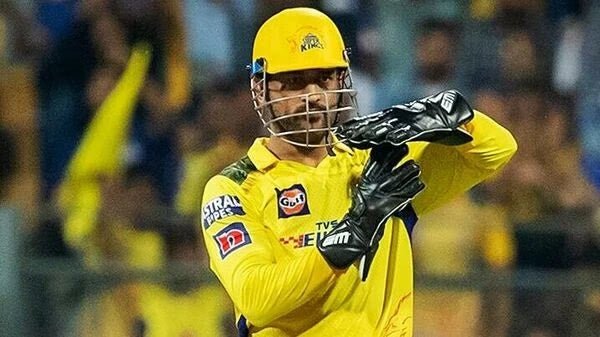What is DRS in Cricket? Rules, Technology & Impact on the Game

Cricket is a sport where a single umpiring decision can change the course of a match. To minimize human errors and ensure fair play, the Decision Review System (DRS) was introduced. This technology-driven system allows players to challenge on-field umpiring decisions, giving them a chance to overturn incorrect calls.
But what is DRS in cricket, how does it work, and why is it so important? This article breaks down everything you need to know about DRS, including its rules, the technology behind it, and its impact on modern cricket.
What is DRS in Cricket?
The Decision Review System (DRS) is a technological aid in cricket that helps teams challenge umpiring decisions. It was designed to correct human errors and ensure the game remains fair.
Key Highlights of DRS in Cricket
✔ Introduced in 2008 in a Test match between India and Sri Lanka.
✔ Uses advanced technology like Hawk-Eye, UltraEdge, and Hotspot.
✔ Teams get a limited number of reviews per innings.
✔ Only the captain or the batter (for an out decision) can request a review.
Since its introduction, DRS has changed how cricket is played, allowing teams to use technology to avoid controversial dismissals and ensure correct decisions.
How Does DRS Work in Cricket?
The Decision Review System follows a clear step-by-step process to review an umpire’s call.
Step-by-Step DRS Process
- Player Requests a Review
- The fielding captain (for bowling teams) or the batter (if given out) must signal a "T" gesture within 15 seconds of the umpire’s decision.
- On-Field Umpire Refers to the Third Umpire
- The third umpire examines available technology to reassess the decision.
- Technology is Used to Analyze the Incident
- UltraEdge or Snickometer is used to detect faint edges.
- Hawk-Eye (Ball Tracking) predicts whether the ball would hit the stumps for LBW decisions.
- Hotspot (Infrared Imaging) checks for ball contact with the bat or pad.
- Third Umpire Makes the Final Call
- If evidence proves the on-field umpire was wrong, the decision is overturned.
- If the evidence is unclear, the original decision remains unchanged.
- Umpire’s Call Rule (For LBW Decisions)
- If Hawk-Eye shows the ball only marginally hitting the stumps, the on-field decision stands.
- This rule has been controversial as it sometimes allows incorrect decisions to stay in place.
DRS Rules in Cricket: Format-Wise Breakdown
Different cricket formats have slightly different DRS rules.
1. DRS in Test Cricket
✔ Each team gets 2 unsuccessful reviews per innings.
✔ Reviews are not replenished after 80 overs anymore (earlier they were).
✔ "Umpire’s Call" is applied for LBW decisions.
2. DRS in One-Day Internationals (ODIs)
✔ Each team gets 2 reviews per innings.
✔ Since 2017, DRS has been mandatory in all ODIs.
✔ The same rules as Test cricket apply for LBW and caught-behind reviews.
3. DRS in T20 Cricket
✔ Only 1 review per innings.
✔ Introduced in 2017 T20 matches and later added to domestic leagues like the IPL.
✔ Since T20 is a fast-paced format, quick decision-making is crucial.
4. DRS in IPL & Other Leagues
✔ The Indian Premier League (IPL) adopted DRS in 2018.
✔ Teams get 1 unsuccessful review per innings.
✔ The same Hawk-Eye, UltraEdge, and Umpire’s Call rules apply.
Technology Used in DRS: A Detailed Look
The Decision Review System relies on multiple high-tech tools to ensure accuracy.
1. Hawk-Eye (Ball Tracking)
- Predicts the ball’s trajectory after hitting the batter’s pad.
- Helps in LBW decisions by determining if the ball would hit the stumps.
- Has an accuracy of 99.99%.
2. UltraEdge (Snickometer)
- Uses sound wave analysis to detect edges off the bat.
- Helps in caught-behind and LBW decisions.
3. Hotspot (Infrared Imaging)
- Uses heat sensors to detect whether the ball touched the bat or pad.
- Used in high-profile matches but is expensive.
4. Real-Time Slow-Motion Cameras
- Helps umpires in run-out, stumping, and close catching decisions.
Impact of DRS on Cricket
The introduction of DRS has revolutionized umpiring. While it has many benefits, it is not without flaws.
Advantages of DRS in Cricket
✔ Reduces Umpiring Errors – Corrects obvious mistakes.
✔ Increases Fairness – Ensures deserving players stay in the game.
✔ Adds Excitement – Fans enjoy the suspense of a close review.
✔ Improves Team Strategies – Teams use DRS strategically to their advantage.
Challenges & Controversies
❌ Umpire’s Call Confusion – Many believe it still leaves room for errors.
❌ Expensive Technology – Not all cricket boards can afford it.
❌ Delays the Game – Some reviews take too long.
❌ Inconsistencies – Different formats and leagues use different DRS rules.
Famous DRS Controversies in Cricket
- Sachin Tendulkar’s LBW (2008 vs Sri Lanka) – The first-ever DRS controversy.
- 2011 World Cup (Ian Bell’s Review) – A decision that stunned fans.
- 2019 Ashes (Ben Stokes Review) – A game-changing moment in a crucial match.
- IPL 2022 (MS Dhoni’s Review) – A controversial decision that divided fans.
Future of DRS in Cricket
The Decision Review System is expected to become even more advanced in the coming years.
What’s Next for DRS?
???? AI-Driven Decisions – Artificial intelligence may eliminate umpire biases.
???? More Camera Angles – Advanced slow-motion cameras could provide better clarity.
???? Uniform DRS Rules – Making DRS mandatory across all formats and tournaments.
With cricket becoming more technology-driven, DRS will continue evolving to make the game fairer and more exciting.
FAQs About DRS in Cricket
1. Who introduced DRS in cricket?
The International Cricket Council (ICC) introduced DRS in 2008 to reduce umpiring errors.
2. How many reviews are allowed in cricket?
- Test Cricket: 2 per innings
- ODIs: 2 per innings
- T20s: 1 per innings
3. Why is Umpire’s Call controversial?
It allows marginal LBW decisions to stay, even when technology suggests the ball would have hit the stumps.
4. Will DRS ever be 100% accurate?
While technology is improving, no system is completely error-free.
5. Is DRS available in all cricket matches?
No, some domestic matches and smaller tournaments do not use DRS due to cost and technical limitations.
Final Thoughts
The Decision Review System (DRS) in cricket has made the game fairer by correcting human errors. While it is not perfect, it has significantly improved decision-making in modern cricket.
As technology advances, DRS will continue evolving, making cricket even more exciting and transparent for players and fans alike!
What's Your Reaction?



















